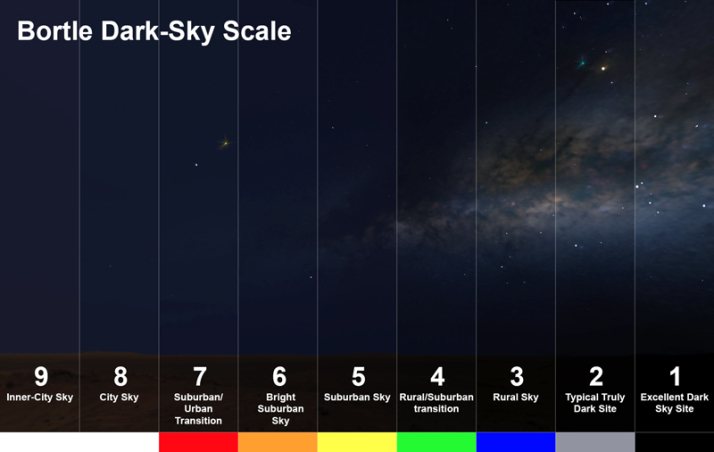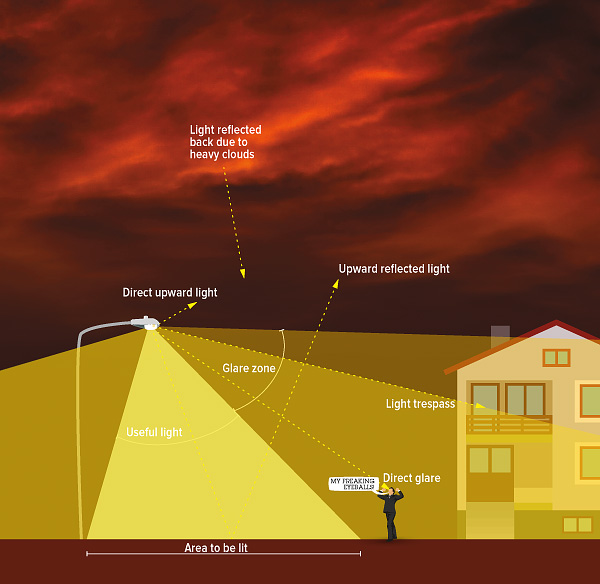Conserving Dark Skies
In 2008, the Santa Fe Conservation Trust created our Dark Skies program, educating the community about the importance of the connection between land and sky conservation and the Five Easy Steps to Bring Back the Stars. We also require language to add the requirement of compliance with the Night Sky Protection Act in our conservation easements agreements. Hundreds of people in the community have participated in our educational Star Party events; done in collaboration with the Capital City Astronomy Club, Santa Fe Garden Club, Santa Fe Southern Railway, Salazar Elementary and Commonweal Conservancy, celebrating land conservation in the New Mexico and the importance of Dark Skies for future generations.
Beautiful, Inspiring, Endangered, New Mexico’s Oldest Natural Beauty… Our Starry Night Skies
The night sky has informed and inspired humankind for thousands of years. Around the globe, regardless of national borders, political ties or spiritual beliefs, all of us live with the night sky. It is one of the great unifiers of the human experience across time and across cultures. Very few places on Earth look the same as they did 1,000 years ago but when we look at the night sky, we see the same sky revered by our ancestors.
Unfortunately, the invention of the incandescent light bulb changed everything. The night sky most of us see now is a lot less dark than it was in even the recent past. Researchers have found that a single unshielded street lamp can affect the view of the night sky for an observer up to 125 miles away. It is estimated that artificial lighting has consumed so much of the night sky that two-thirds of the US population can no longer see the Milky Way! Here in New Mexico, we are still fortunate to have dark skies throughout much of our state, but we are rapidly losing what stars we have in our urban centers – one outdoor light at a time.

The Bortle Dark-Sky Scale
In 1999, New Mexico enacted the Night Sky Protection Act; its purpose is to regulate outdoor night lighting fixtures to preserve and enhance the state’s dark sky while promoting safety, conserving energy and preserving the environment for astronomy. One of the first of its kind in the US, the Night Sky Protection Act makes dark skies a priority in New Mexico for the health of its people, wildlife, and economy. The act requires that outdoor lighting be fitted with shielding that directs light downward, rather than upward or laterally. The act allows present lighting to remain throughout its useful life, but requires the installation of conforming lights whenever replacement would normally occur, so that any economic burden is limited or avoided altogether. The law also allows local communities to enact more stringent local ordinances. The New Mexico Night Sky Protection Act takes important steps to stop continued increase in light pollution while the bright stars are still among the things that make New Mexico the “Land of Enchantment.”

Blue dot is the City of Santa Fe. Create your own map at www.lightpollutionmap.info
The good news is we can bring back the stars! Everyone can take simple and effective steps to preserve and restore our beautiful dark night sky. Outdoor lighting is certainly something we need. It provides safety from crime, visibility on roadways, and comfort when walking at night. However, more and more lights are being used improperly and with little thought to address human needs. When you can see a light from far away or from above, it is probably a “polluting” light.
Polluting lights do more than just spoil the view of the stars. They confuse and harm wildlife, create light trespass, create glare, waste energy, and actually reduce nighttime visibility. Not to mention recent studies connecting increased Breast Cancer rates to over exposure to artificial lighting at night. Polluting light fixtures are less expensive to purchase and install, but end up costing you much more energy in the lifetime of the fixture – you end up paying more.
Good lighting allows us to meet the basic intent of lighting – safety, security, visibility, comfort- while having very little negative impact on our skies and our health. Good fixtures direct all the light where it is needed, and do not scatter it wastefully into the night or through the neighbor’s window. Good lighting incorporates modern, high performance optics that aim light in a defined pattern to reduce glare and light pollution.
For a typical unshielded light fixture, 50% of the light shines upward. This is a direct waste and is the main cause of light pollution. About 40% of the light shines downward to illuminate the intended target. Light emitted horizontally tends to create glare, working against the productive light. A shielded fixture eliminates the upward light and minimizes glare, allowing a much smaller wattage bulb to be used.

Image by Anezka Gocova in “The Night Issue”Alternatives Journal 39:5 (2013)
The Hidden Costs of Light Pollution
Dark Skies News

2024 Annual Report & 2025 Newsletter
From the Executive Director We are calling this edition of earthLINES “the people edition.” In addition to the almost 200 wonderful volunteers who helped us deliver our mission last year, SFCT was also very active in 2024 deepening our work to bring more people into...
2023 Annual Report & 2024 Newsletter
From the Executive Director 2023 was our 30th anniversary at SFCT, and what a year it was! We wanted to offer as many gatherings as we could to give you the opportunity to learn about and participate in our work. We had two free star parties, a host of Insider Tours,...

2021 Annual Report
SFCT 2021 Annual Report / 2022 Newsletter Explore all the activities the Santa Fe Conservation trust is engaging in (with your help!), including work on the Conservation Homestead, new properties under conservation easement, trail work and new community engagement...
